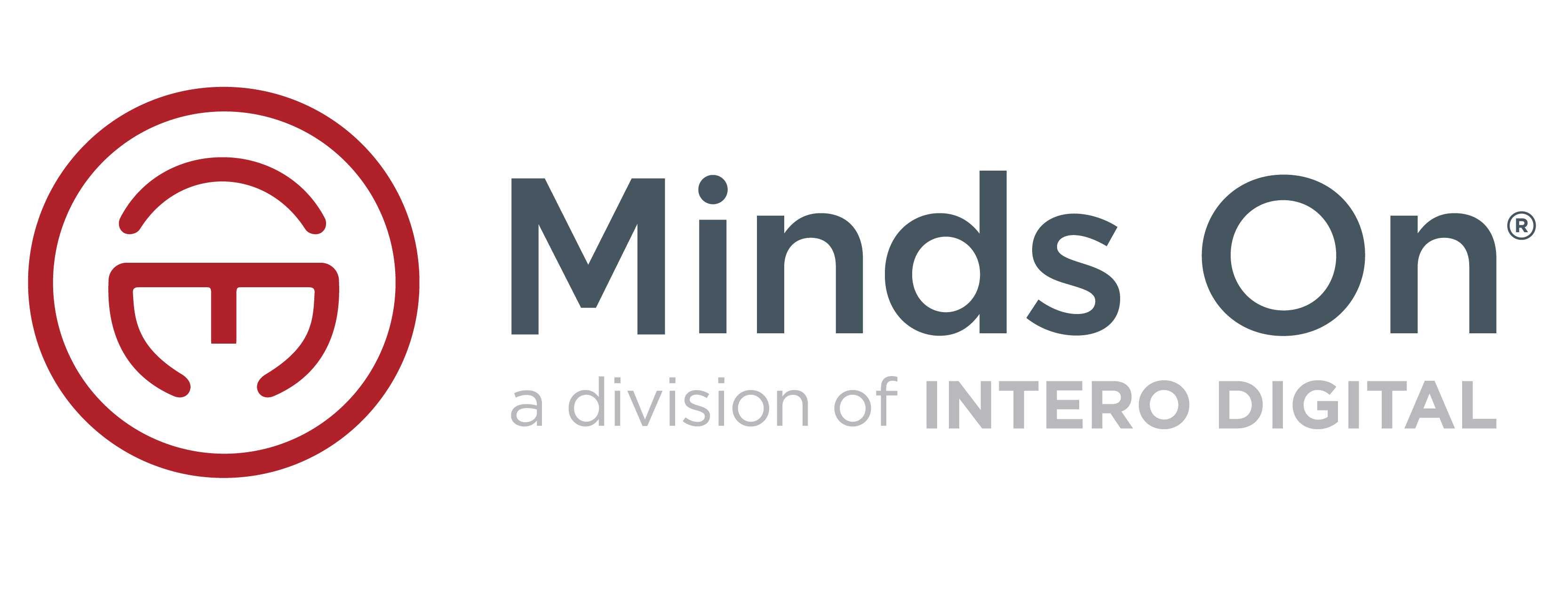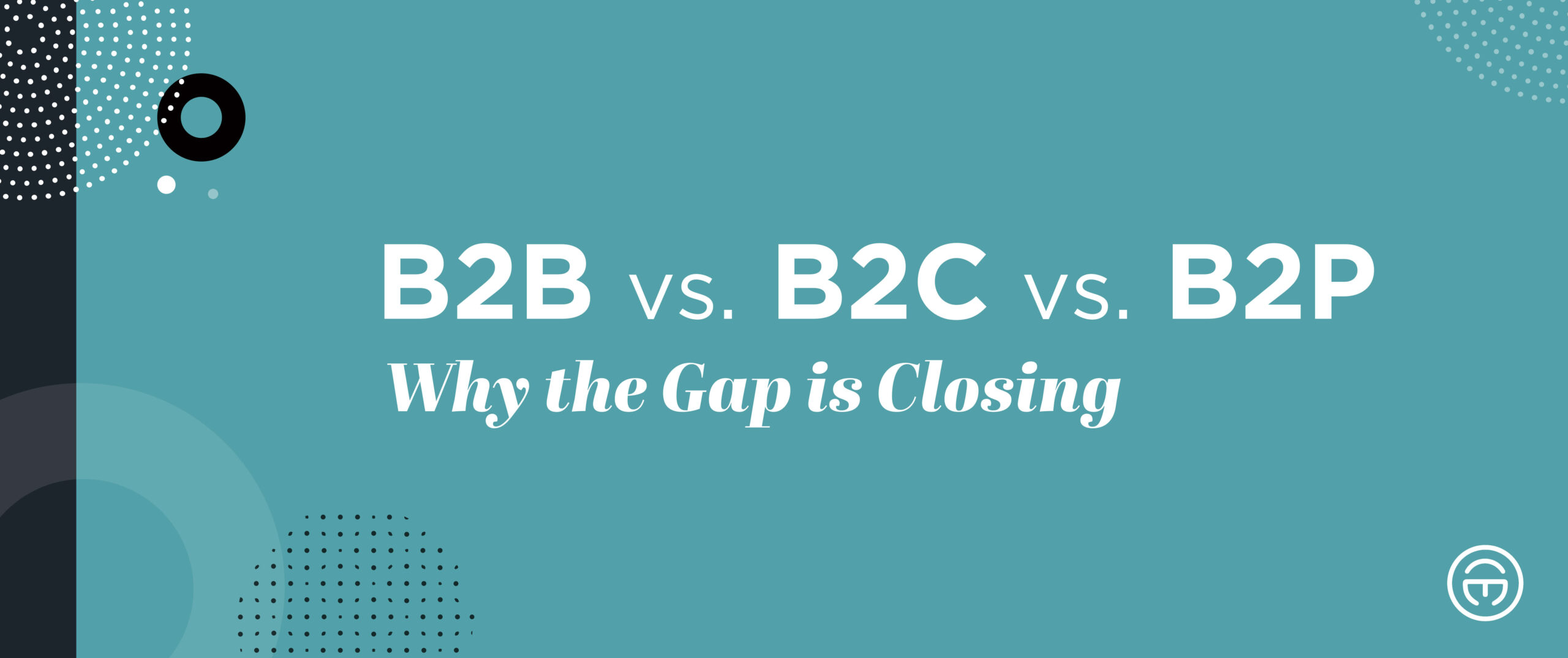For decades, using “B2B” and “B2C” to distinguish how a business markets and sells its product or service has been the industry standard. Today, B2B, in particular, is experiencing an ongoing shift in identifying how buyers consume information and their expectations around those interactions. This often means a broader view, with more personalized, human-centric experiences.
The emergence of COVID-19—with its continued blurring of the way we work and live—has only accelerated these expectations. As the distinctions between the marketplace and home continue to lessen, the one-way-or-another view of B2C vs. B2B marketing will ultimately shift into something altogether new.
As B2B marketers, Minds On is always seeking out ways to achieve greater connection. We have recently found ourselves intrigued by an emerging approach called B2P—which stands for Business to People. It embodies principles that Minds On has long embraced.
Some Definitions
To understand where we’re going, it helps to gain a solid understanding (or be reminded) of where we are and how we got here.
- B2C(Business to Consumer)– This type of marketing originates directly from the producers of a product/service and is delivered directly to its end user. This customer is typically the sole decision maker or influencer. An example is buying a Coke based on first-hand knowledge or convincing someone to buy you a pair of Nikes based on the brand’s reputation. B2C marketers tend to group consumers based on broad demographics—like college-educated women aged 25-40 or retired men from the Midwest. B2C favors emotion to influence its audience by highlighting the benefits of its products and services and explaining how they solve problems.
- B2B(Business to Business) – This type of marketing, as the name suggests, involves the influence of one business to another (typically manufacturers and wholesalers). The decision-making process is usually longer than a direct-to-consumer context. B2B marketers understand that more than one person is typically involved in the buying process for a business— budget holders, decision makers, influencers, and end users. Overall messaging, however, tends to consider them as one group. B2B favors logic to influence its audience by highlighting how its products and services solve a problem or add value, like saving time, money, and resources.
Because of what has inherently been seen as a fundamental opposite in approach—shorter vs. longer decision-making process, fewer-vs-greater number of stakeholders, and emotion vs. logic—B2C and B2B have been seen as an either-or model that marketers must choose.
That’s changing.
The B2P (Business to Person) Philosophy
The foundation of B2P means transcending the fundamentals of B2C and B2B by recognizing the individual at the center of the buying process. This means placing emphasis on the unique goals, pains, preferences, and habits of all decision makers, whether for personal or professional consumption.
By considering a B2P approach to your B2B strategy, you expand your view of the collective of influencers within the industries you market to and use an examination of the unique needs and interests to drive your strategy. Understanding the decision-making patterns of more than one demographic leads to deeper, more detailed customer insight that allows your creative team to provide more relevant and effective content.
Key Considerations for a B2P Business Model
Below are practices and tools that should be very familiar to B2B marketers. Here are some common practices that lean toward a B2P mindset.
- Personas: These composite profiles that identify each ideal prospect are ways that you can move beyond selling to a “business title.” Personas are created by walking you, the seller, step-by-step through exercises that explore and test how well you know each person in the buying process. It highlights their preferences, communication styles, challenges, and aspirations and identifies ways your company can communicate more effectively, and on a human level.
- Messaging: Every brand should have its own story, and the focus should always be on the customer, not the brand. Participating in a deep-dive exploration such as a Brand Story exercise can help pinpoint your customers’ specific challenges and examine how your brand rises to meet and address those challenges and the best ways to connect and communicate with each buyer.
- Website: Your website is the place where all of your marketing efforts lead. The B2P element here is ensuring that everything on your website is delivering a user-centric experience. Beyond optimizing functionality so that all buyers can find the information and resources they need, it means considering each persona you’ve created and tailoring your content to their preferences. This will ensure that they know how to take the next step and engage with you.
- Sales Enablement: Once you know who you’re selling to, the next step is to create a solid strategy that appropriately empowers your sales team. Sales enablement tools—content, technology, and processes—provide a more customer-centric experience that can maximize marketing and deliver significant ROI. Last month, Minds On dedicated an entire blog post to this subject alone.
Benefits of Considering B2P
- Human touch: It’s simple; the more personalized the content, the more genuine the connection, the more impact. Data shows that B2B customers are twice as likely to consider a brand that makes a personal appeal over an overtly professional one. Testimonials that are specific and sincere, for instance, are more effective than company claims alone.
- Better targeting: Understanding the decision-making pattern of each target audience, while labor intensive in the beginning, generates great benefits that pay off in the long run. This allows you to reach beyond mere awareness and consideration campaigns and tap into something deeper.
- Standing out: With so much potential exposure and emphasis on following trends, brands in the same industry can begin to look alike. It is essential to differentiate yourself in a crowded field. Utilizing the tools and strategy will organically lead to appropriately personalized language and images that best reflect and appeal to your specific audience.
Easy actions you can take today
- Small opportunities for greater engagement: Utilizing a chat feature on your homepage is a way to spark a conversation, especially with a new visitor. Social media posts that pose a question or invite followers to contribute to the conversation are significantly more engaging than ones that merely promote goods and services.
- Provide more value: As businesses continue to be cautious, people still want to be connected. Find something you can offer for free. Thought leadership pieces like blogs and white papers can boost your reputation as an innovator in your field. Providing access to useful tools or free trials can help you gain a reputation as a generous organization.
- Organizing data: It’s one thing to create personalized materials; it’s another to effectively utilize them on an ongoing basis. There’s no need to start from scratch for every new campaign or call for materials. Create a database that can be easily accessed at the start of every new campaign that will serve as a storehouse for high-quality, tested insight.
To find out more about implementing tools like Personas, Sales Enablement, and modifications to your website, visit mindson.com or contact us today.




